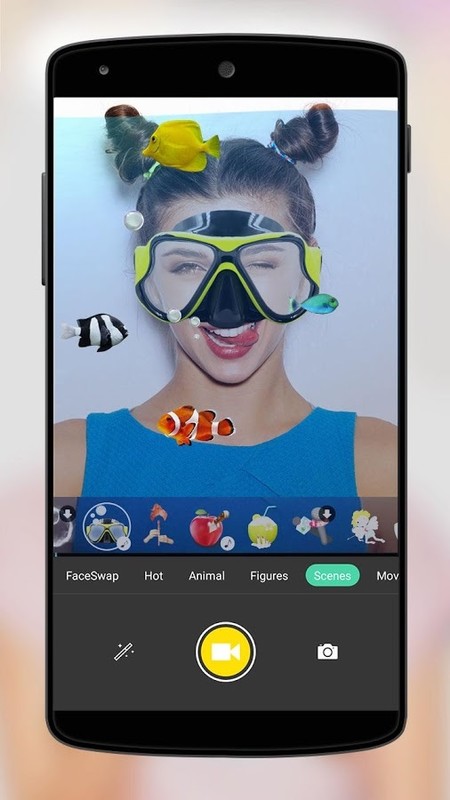

Once an option has been selected, swipe horizontally to change the value right for a positive increase, and left for a negative.In the world of photography, editing makes an image come to life. To use Snapseed’s tools, you can just swipe up or down vertically to select the element that you want to be changed.
#Photo editor app snap how to#
Snapseed has a very minimal interface, and this could be seen as confusing at first, but a quick touch of the screen tells you all you need to know about how to use the app. When you choose to export your edit, you can select the size and format to save the file. To Export a file, click on Export and then click on Export, or Export as.

To Save a file, click on Export, and then click on Save. These files are saved to your device and can then be used in any Social Media app, gallery, or anywhere else, as you see fit.Īfter you’ve edited your image non-destructively, you’d want to save a version of your edit or share it via another app. Snapseed’s export options allow you to specify the size and level of compression of the JPG file that you save. Masking for each of your edits is another powerful feature that can be used to your creative advantage. If you ever make a mistake to your edit, you can step back through your individual edits one by one, until you are at a point where you can continue editing. This means that you can experiment with different edits and effects without worrying about ruining your original photo. Non-Destructive Editing in the app allows you to make changes to your photos without permanently altering the original image file. These output files are usually JPG or PNG files. Any settings are applied to the image data, but these changes are finalized only when the final output file is saved. One of the benefits of shooting RAW files is that they are never changed in the process of editing them. Of course, Snapseed also allows you to edit JPG files.
#Photo editor app snap android#
Snapseed on iOS supports a wide range of RAW files from DSLR and Mirrorless cameras, while Snapseed on Android devices only supports DNG RAW files created on the device itself. This is especially useful in the case of under or overexposed images, or for photographs taken in challenging light.
#Photo editor app snap software#
Specialized RAW software can be used to extract even more detail from the RAW data. However, having all the original information unchanged by rendering software can sometimes be useful. The difference is that in JPG files, the software has to interpret this RAW sensor data, and saves its own interpretation to JPG format, with compression, and loss of some original data. RAW files are an important tool for photographers because these files retain all the original information captured by the sensor without any loss or change. Today, many mobile devices are able to save RAW files in the form of DNG files. This is one of the reasons why the Snapseed interface is so usable, but at the same time also powerful on the mobile platform. There aren’t features that were intended for desktop use, but then badly ported to a mobile platform. Why is this important? Because it retains usability that is intended to be used to its maximum ability on mobile devices. So, Snapseed is clearly a mobile device first, and now, a mobile-only app. Snapseed was first introduced for the iPad in 2011, and though there used to be a desktop version for macOS and Windows, it has been discontinued. What Are Some Alternatives to Snapseed?.


 0 kommentar(er)
0 kommentar(er)
